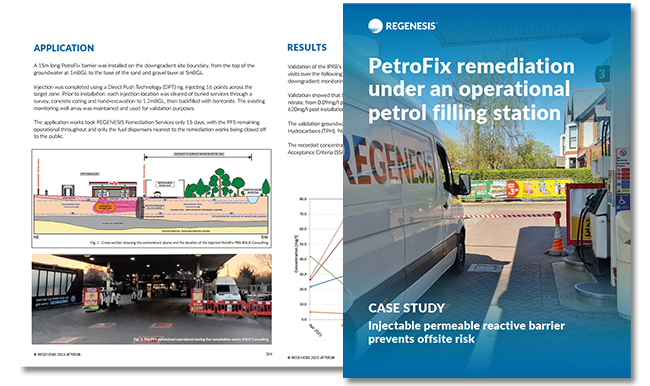PetroFix Permeable Reactive Barrier Prevents Offsite Risk at Active Gas Station
Background
Fuel losses at an operational gas station in the UK resulted in light non-aqueous phase liquid (LNAPL) seasonally building up in groundwater. High levels of dissolved phase contamination was shown to be migrating beyond the site boundary and providing a potential off-site liability. It was decided that voluntary remediation should be completed to prevent offsite advection and SLR Consulting concluded that the most sustainable remedial design for the site would be the installation of an injectable permeable reactive barrier (IPRB) using PetroFix® colloidal activated carbon. SLR partnered with REGENESIS to design and apply the solution.
A 15m long PetroFix barrier was installed on the downgradient site boundary, from the top of the groundwater at 1mBGL to the base of the sand and gravel layer at 5mBGL. Injection was completed using a Direct Push Technology (DPT) rig, injecting 16 points across the target zone. Prior to installation, each injection location was cleared of buried services through a survey, concrete coring and hand-excavation to 1.2mBGL, then backfilled with bentonite. The existing monitoring well array was maintained and used for validation purposes.
The application works took REGENESIS Remediation Services only 15 days, with the PFS remaining operational throughout and only the fuel dispensers nearest to the remediation works being closed off to the public.

 Americas
Americas Europe
Europe Français
Français Deutsch
Deutsch Italiano
Italiano Español
Español




